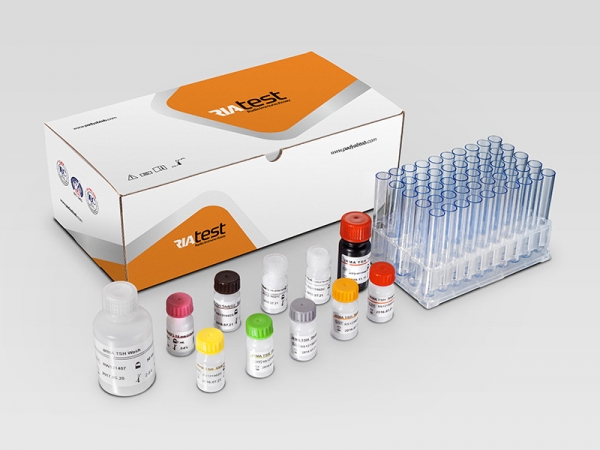| Name | T3 RIA Test |
| Full name | Human T3 RIA Test Kit |
| Category Name | Thyroid RIA kits |
| Test | 100 |
| Principle | Competitive RIA |
| Detection Range | 0-8 ng/mL |
| Sample | 25λ |
| Sensitivity | 0.08 ng/ml |
| Total Time | ~45 min |
| Shelf Life | 45 Days from the manufacturing date |
T3 RIA kit description:
The T3 RIA is intended for the quantitative determination of the Free Triiodothyronine (T3) concentration in human serum
Materials provided with T3 RIA Test Kit:
1. Coated Tubes: Anti –T3 Antibody (100 tubes)
2. Triiodothyronine (T3) Antigen Labelled with I 125 (Tracer I125)
3. T3 standard set, contains 0, 0.5, 1, 2,4, 8,. ng/mL, ready for use
4. Control serum: T3 in serum with preservatives(1Vial, 1 ml)
Materials Required, not Provided:
1. Precision pipettes
2. Distilled or deionized water
3. Gama counter
Introduction
3,5,3′ triiodothyronine (T3) hormone secreted by thyroid gland and circulates in the bloodstream, mostly bound to the plasma proteins, thyroxine binding globulin (TBG) and thyroxine-binding prealbumin (TBPA) . The concentration of T3 is much less than that of T4, but its metabolic potency is much greater. T3 hormone level is good indicator of thyroid disease state and body metabolism. T3 measurement has uncovered a variant of hyperthyroidism in thyrotoxic samples with elevated T3 values and normal T4 values. Likewise, an increase in T3 without an increase in T4 is frequently a forerunner of recurrent thyrotoxicosis in previously treated patients. Another clinical application of T3 is in patients with normal thyroid function that is verifiable only by natural concentration of T3 if even T4 concentration is low. T3 measurement is useful in monitoring under treatment patients with hyperthyroidism and also the treated patients that have stopped their treatment. T3 measurement is also valuable especially in hyperthyroidism and euthyroid diagnosis. In addition to hyperthyroidism, there are many circumstances in which the levels of TBG are not normal. For instance, pregnancy or estrogen therapy cause increases in T3 and T4, whereas androgenic steroids have the opposite effect; also, decreasing of TBG cause decrease in T3 and T4 too. Because of this variation in TBG levels, interpretation of T3 results do not show an accurate reflection of the activity of the thyroid gland.
Principle of the assay
Immune radiometric assay (IRMA) kit, evaluates T3 based on the competitive reaction. The present T3 in the samples compete with Iodine-125 to attach to the coated rabbit anti polyclonal onto the end of the tube walls. The amount of activity form in the tube has an inverse relationship to the T3 concentration. T3 standards with known concentrations are tested with the unknown samples in which the concentration of unknown samples is achieved based on the standard curve of the counted amount against concentration of T3.



